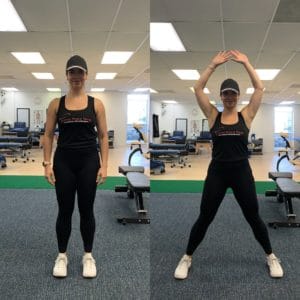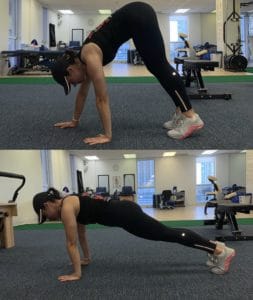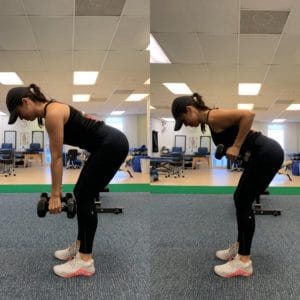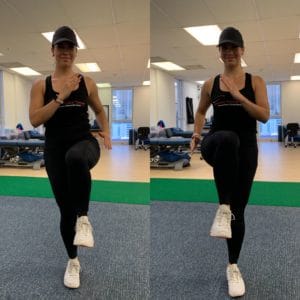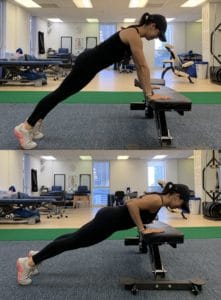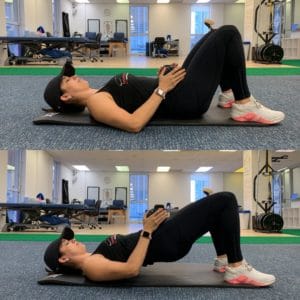7 Simple Home Exercises
As the COVID-19 pandemic creates increasing concerns and restrictions across the globe, many of us have had to make some dramatic changes to our normal routines. School closures, working from home, and social distancing guidelines have many of us spending way more time at home, with fewer opportunities for exercises. This can take a toll on our mental health and physical well-being. At home exercises are beneficial to aiding our well-being.
Easy exercises can be a great coping mechanism during times of stress. In addition to the long term gains, moving your body through exercise can have some immediate benefits. For example, exercise helps stimulate the release of feel-good neurotransmitters in the brain. These mood boosters can help us fight off stress, get a better night’s sleep, and increase feelings of overall contentment. Bonus: these benefits happen to be linked to a well-functioning immune system!
Examples of Home Exercises
Interested in home exercises? Not sure where to start? Read on for a circuit-style workout made up of seven of our favorite simple at home exercises. We’ve also included best practice tips to make sure your form is tip top, and common missteps we see with these movement patterns.
Here’s how to do it: Perform this workout as a circuit. Complete the indicated number of reps for each exercise without rest. Once you’ve completed one set of each exercise, rest for one to two minutes, then start back at the top. Repeat the circuit for a total of 2-3 sets.
1. Jumping Jacks
This quintessential warm-up exercise is excellent for getting the heart rate up. It increases circulation, and helps prepare your body for more challenging exercises.
How to properly perform: Start with your feet together and hands at your sides. As you jump your feet to slightly more than shoulder width apart, raise your arms to the sides and over your head. Without pausing, return to the start position. Maintain good trunk control throughout the movement, taking care not to arch your back. That’s one rep. Perform 15-20 repetitions.
For a low impact version: Simply swap out the jump for a side step, alternating each leg.
PT Knowledge is Power: Plyometric (jumping-type) exercise is an osteogenic activity. This means it helps build strong bones. The impact from landing promotes increased osteoblast activity. These bone cells are crucial to new bone formation.
2. Inchworms
This is my go-to for firing up the core and warming up the upper body!
From a standing position, hinge at your hips, reaching your hands to the ground. (Bend your knees if you need to.) Walk your hands forward to a high plank position. Pause for one second, then walk your hands back to stand up. That’s one rep. Perform 8-10 reps.
PT Knowledge is Power: A common mistake I see with this exercise is walking the hands out too far. You want the hands to be directly under the shoulders. This will decrease the extension moment on the spine, and help you produce more effective muscle force through the trunk stabilizers.
3. Body-weight Squats
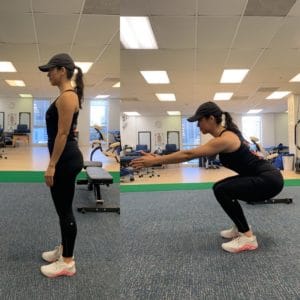
Start with your feet hip width apart. Pick a foot stance that feels comfortable. Your feet can be parallel, or they can point slightly outward. Your choice! Next, bend your knees and sit your hips back. A good self-cue: Pretend you are going to sit in a low chair. Squeeze your glutes as you stand up. That’s one rep. Perform 10-12 reps.
PT Knowledge is Power: A common error is allowing your knees to cave in during the squat. Known as knee valgus, this can be an indication of insufficient muscle engagement of the later hip stabilizers and hip external rotators. Try tying a light-tensioned resistance band around your lower thighs to increase sensory input to the lateral hip.
4. Bent-over Row
One of my favorites for building a strong back. No weights? No problem. Use a gallon jug of water. One gallon is approximately 8 pounds.
Holding a weight in each hand, bend your knees slightly and hinge your hips until your torso is almost parallel to the ground. Maintain a stiff trunk as you pull the weights up toward your chest. That’s one rep. Perform 8-10 reps.
PT Knowledge is Power: One common compensation we see here is overuse of the back extensors to stabilize the spine. If you begin to feel low back aching or tightness with this move, it could be a sign that you’d benefit from a little more trunk stability. Try the One-Arm Dumbbell Row variation. This move preserves all the strength benefits of the Bent Over Row, while providing more trunk stability in a closed chain position. Hit this move for 2-3 weeks, then reattempt the Bent-Over Row.
5. High Knees
Time to get the heart rate up again! This cardio move engages the core while working coordination and agility.
Start standing with feet hip width apart. Lift your left knee up and pump your right fist forward. Hop and switch so the right knee raises as you land on your left leg. That’s one rep. Perform 15-20 reps.
PT Knowledge is Power: A common error is to try and jump high and fast. A better approach is to focus on light, quick hops from leg to leg while lifting each knee between hip to belly-button height. The goal here is to maintain trunk stability through dynamic lower extremity movement.
6. Incline Push-Up 
This power-house move challenges trunk stability and upper body strength all at once. The incline makes it more accessible to those of us still building upper body strength.
Begin in a high plank position with your hands at shoulder width distance against a chair or bench. As you bend your elbows, lower your body toward the chair. Straighten your elbows and return to the start position.
The range of motion for this move is completely up to you and your current strength level. Work within a range that you can control. Quality of quantity here! Perform 6-8 reps.
PT Knowledge is Power: You want your elbows to be at a 45° angle to your body. This A shape pushup is superior to the traditional T shape. The A shape push up provides more stability to the shoulder, while also offering greater potential range of motion. The T-shape push-up places increased stress to the anterior capsule of the glenohumeral joint. And remember: A strong plank is king here. Don’t let that lower back arch.
7. Bridge
The bridge is having its moment in the sun right now. This old-school, simple exercise is known for its ability to build strength in the thighs and glutes. Pro Tip: For an extra challenge, do a single leg variation.
Begin lying on your back with your knees bent and your feet on the ground. Push your feet into the floor, squeeze your glutes, and raise your hips up. Take care not to hyperextend your back. Lower your hips back down to the ground. That’s one rep. Perform 10-15.
PT Knowledge is Power: The biggest mistake physios see here is trying to raise your hips as high as you possibly can. This is going to change the emphasis of the movement from hip extension to back extension. You’ll end up feeling the exercise burn in the low back. That’s not what we want. Instead, focus on driving the motion through your glutes. That way we keep the emphasis on the hip extensors – your glutes and hamstrings.
Testing Your Home Exercises
Once you’re done with this workout, tell us how it went! DM us on Instagram @symmetryptmiami.
Tag us in a video of you crushing some of these moves, and we’ll feature you in our stories!
At Symmetry we can help you take your exercises a step further through performance testing. We are trained in a variety of movement and performance testing measure to best suit your needs. We can help determine vulnerable areas to injury, or areas that could benefit from focused training or exercise.
If you are quarantined in your home and have questions about any of the variations mentioned above, contact us to schedule a virtual appointment. Otherwise, come see us at the clinic for a session!
Written by: Dr. Nicole Ramos, PT, DPT

